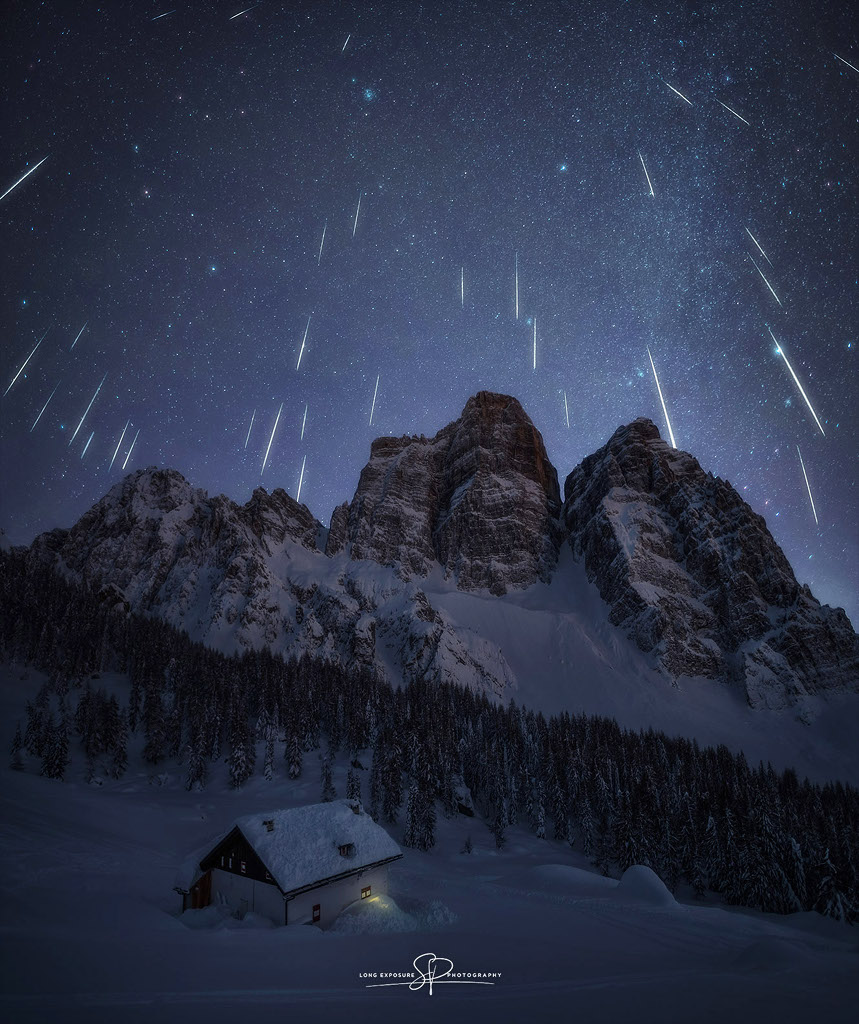2020年12月17日
Gemini’s Meteors
Image Credit & Copyright: Stefano Pellegrini
Explanation: Taken over the course of an hour shortly after local midnight on December 13, 35 exposures were used to create this postcard from Earth. The composited night scene spans dark skies above the snowy Italian Dolomites during our fair planet’s annual Geminid meteor shower. Sirius, alpha star of Canis Major and the brightest star in the night, is grazed by a meteor streak on the right. The Praesepe star cluster, also known as M44 or the Beehive cluster, itself contains about a thousand stars but appears as a smudge of light far above the southern alpine peaks near the top. The shower’s radiant is off the top of the frame though, near Castor and Pollux the twin stars of Gemini. The radiant effect is due to perspective as the parallel meteor tracks appear to converge in the distance. As Earth sweeps through the dust trail of asteroid 3200 Phaethon, the dust that creates Gemini’s meteors enters Earth’s atmosphere traveling at about 22 kilometers per second.
Submitted to APOD: Notable images of the 2020 Geminids Meteor Shower
Tomorrow’s picture: December’s diamond ring
双子流星
影像提供与版权: Stefano Pellegrini
说明: 这张地球的风景明信片,组合自摄于12日13日当地子夜后1小时期间的35幅照片。明确的说,这片夜景呈现双子流星雨极大期时,意大利多罗迈雪峰上空的地球景观。在右缘附近,有道流星痕正好擦过大犬座及夜空最明亮的天狼星。在南阿尔卑斯山峰上方靠影像顶端处,可见到弥漫光斑状、拥有约1千颗成员星的鬼宿星团(M44、蜂巢星团、鬼星团)。双子流星雨位在北河二与北河三附近的辐射点,则在视野顶缘之外。因为透视造成的辐射效应,让这些平行的流星痕看似会聚在远方。在每一年,当地球穿过法厄同小行星(3200 Phaethon)的尘尾时,尘埃微粒会以每秒22公里的高速进入地球大气,产生如上图所呈现的双子流星。
已提交给APOD: 2020年双子座流星雨的重要图片
明日的图片: December’s diamond ring







